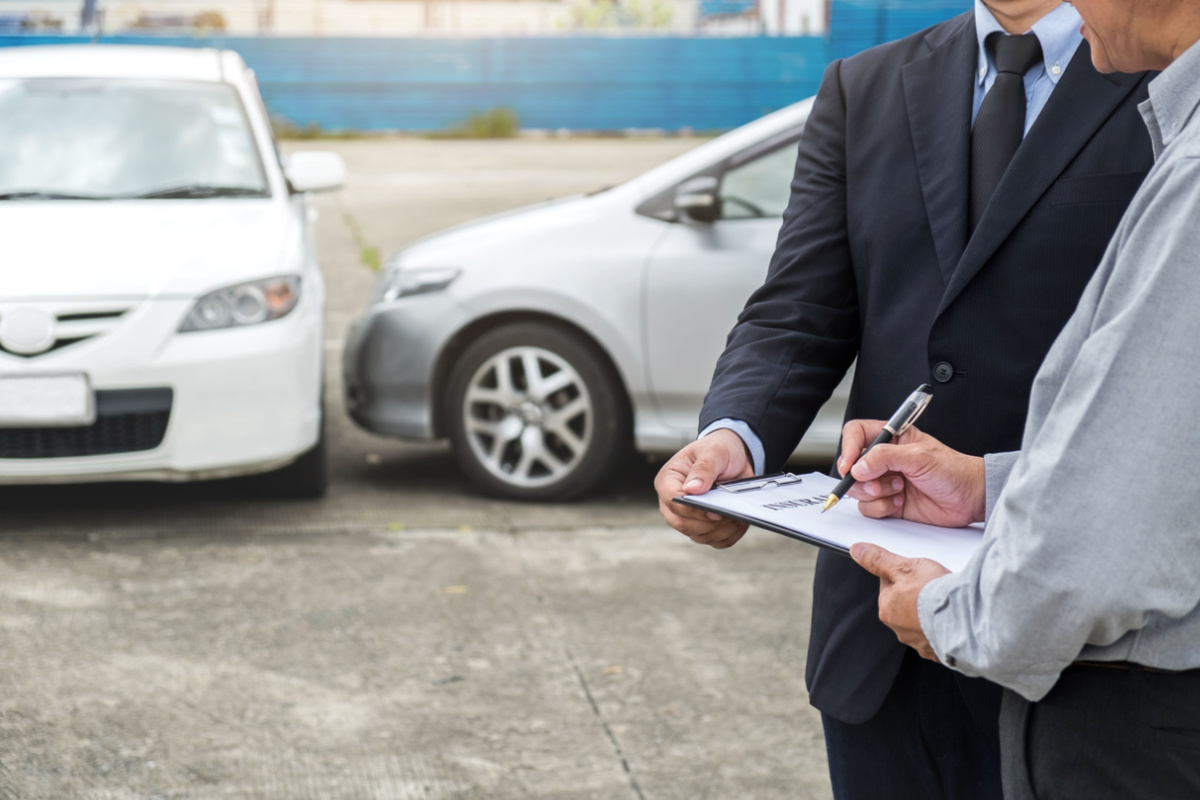
Partner at AKD Lawyers
Practice Areas: Personal Injury

When it comes to keeping your child safe on the road, understanding the specific car seat laws in your state is crucial. In this guide, we’ll break down the differences between California and Louisiana’s child car seat laws, offering practical advice to help parents ensure compliance and safety for their little ones. Whether you’re a resident or traveling between these states, this information will help you stay informed and keep your child safe.
Understanding Child/Booster Car Seat Laws in United States
Why State-Specific Regulations Matter
Every state has its own set of laws designed to protect children while traveling in vehicles. These laws are based on extensive research and are regularly updated to reflect the latest safety standards. Understanding these regulations is essential for ensuring your child is properly secured during every car trip.
Comparing California and Louisiana’s Child Car Seat Laws
While both California and Louisiana have laws aimed at protecting children in vehicles, the requirements differ significantly. These differences can impact the type of car seat you need, where your child should be seated, and how the seat should be installed. Let’s dive into the specifics of each state’s regulations.
California Child Car Seat Laws: Age, Weight, and Installation Requirements
Age and Weight Guidelines
In California, the law mandates that all children under two years old must ride in a rear-facing car seat, unless the child weighs 40 or more pounds or is 40 or more inches tall. This requirement ensures that the youngest passengers receive optimal protection for their head, neck, and spine in the event of a collision.
As children grow, they can transition to a forward-facing car seat, but it’s recommended to keep them in rear and forward-facing seats as long as possible before moving to a booster seat. California law specifies that children under eight years old must be secured in a car or booster seat in the back seat. However, a child who is eight years old or has reached a height of 4’9″ (57 inches) may be secured by a booster seat but is at minimum required to wear a seat belt.
There are exceptions for certain circumstances. For instance, a child weighing more than 40 pounds may be transported in the back seat using only a lap safety belt if the vehicle does not have a combination lap and shoulder safety belt in the back seat.

Installation and Placement Rules
California law emphasizes the importance of correct installation and placement of car seats to maximize safety. Children in rear-facing car seats are not permitted to ride in the front seat if the vehicle is equipped with an active frontal passenger airbag, as airbag deployment can cause serious injuries to young children. Exceptions are made under specific conditions, such as when:
- The vehicle has no rear seat.
- The rear seats are side-facing jump seats or rear-facing seats.
- The car seat cannot be properly installed in the rear seat.
- All rear seats are occupied by children under seven years old.
- Medical reasons necessitate that the child not ride in the rear seat (proof of medical condition may be required).
Proper use of the lap and shoulder belts is also crucial. The lap belt should rest low on the hips, touching the upper thighs, while the shoulder belt should cross the center of the chest and shoulder. This positioning ensures the restraints are most effective in protecting your child during a crash.
Legislative Updates & Additional Resources
Staying informed about legislative updates regarding car seat laws is essential. Effective January 1, 2017, California updated its laws to require that children under two years old must ride in a rear-facing car seat unless they meet the weight or height exemption (40 pounds or 40 inches tall). Additionally, children under eight years old must be secured in a car or booster seat in the rear seat of the vehicle.
Exceptions to these laws are allowed in certain situations, such as life-threatening emergencies or specific medical conditions that make the use of a standard car seat impractical (satisfactory proof may be required). Being aware of these updates ensures you remain compliant with the law and, most importantly, keep your child safe.
For more detailed information on choosing the right car seat and ensuring it’s properly installed, you can visit the National Highway Traffic Safety Administration website. Additionally, the California Highway Patrol offers child safety seat checks at local offices. Contact your local CHP office or visit the CHP website for dates and details about car seat safety events.
Louisiana Child Car Seat Laws: Age, Weight, and Safety Requirements
Age and Weight Guidelines
Louisiana’s car seat laws provide specific requirements based on a child’s age, weight, and height to ensure maximum safety:
- Birth to at least 2 years old: Children must ride in a rear-facing infant or convertible car seat. Parents are encouraged to keep children in a rear-facing seat as long as possible, even beyond the minimum legal requirements, to maximize safety.
- At least 2 years old and has outgrown the rear-facing seat by height or weight: Children should transition to a forward-facing car seat with an internal harness. This seat should be used until the child reaches the maximum height or weight limit specified by the car seat manufacturer.
- At least 4 years old and has outgrown the forward-facing seat by height or weight: Children are required to use a belt-positioning booster seat, which can be either backless or high-backed, using a lap-shoulder seat belt.
- At least 9 years old or has outgrown the booster seat and can pass the 5-Step Test: Children may transition to using the vehicle’s lap-shoulder seat belt, secured correctly. However, it’s recommended that the child is at least 4 feet 9 inches tall before moving out of a booster seat.
Additionally, all children younger than 13 years old should ride in the rear seat of a vehicle when available and be properly restrained.
Installation and Placement Rules
Louisiana emphasizes the importance of proper installation and placement of car seats:
- If the passenger-side front airbag is active, children under 6 years old or who weigh less than 60 pounds must be seated in the rear seat, if available. This rule protects younger children from potential injuries caused by airbag deployment.
- Parents are encouraged to keep children in a rear-facing seat for as long as possible, even beyond the minimum legal requirements, to maximize safety.
- Proper use of the lap and shoulder belts is crucial for older children:
- The lap belt should fit snugly across the child’s thighs and lower hips, not the abdomen.
- The shoulder belt should cross the center of the child’s chest and not touch the neck.
- A child who can be placed in more than one category (by age, weight, or height) should use the more protective category.
Legislative Updates & Additional Resources
Staying informed about the latest legislative changes in Louisiana is essential, as laws can evolve to enhance child safety:
- Child Safety Seats Must Comply with Manufacturer’s Instructions: It’s mandatory that child safety seats are used according to the manufacturer’s guidelines to ensure effectiveness.
- The 5-Step Test: This test helps determine if a child is ready to transition from a booster seat to using the seat belt alone. The seat belt fits correctly when:
- The child sits all the way back against the vehicle seat.
- The child’s knees bend comfortably at the edge of the seat.
- The lap belt fits snugly across the thighs and lower hips.
- The shoulder belt crosses the center of the chest and shoulder, not the neck.
- The child can stay seated like this for the entire trip.
For more information and assistance:
- Louisiana Highway Safety Commission (LHSC): Visit their website for details on child passenger safety and upcoming events.
- Local Louisiana State Police Troop: Each troop operates as a certified child passenger safety checkup station. Contact your local troop for assistance.
- Buckle Up Louisiana Facebook Page: Follow for updates on safety events and tips.
By integrating these legal specifics, your article will provide readers with accurate and up-to-date information on Louisiana’s car seat laws, helping them ensure their children’s safety while complying with state regulations.
California vs. Louisiana Car Booster Seat Law Comparison Table
| Aspect | California Car Seat Laws | Louisiana Car Seat Laws |
|---|---|---|
| Age and Weight Requirements | Rear-facing: Required until age 2, unless the child weighs 40 lbs or is 40 inches tall. Parents are encouraged to keep children rear-facing as long as possible. Forward-facing: Permitted after age 2 or when the child exceeds rear-facing limits. Used until the child is under 8 years old. Booster seat: Required for children under 8 years old unless they are 4’9″ (57 inches) or taller. At this point, they may use a booster seat or seat belt. Seat belt: Allowed once the child is 8 years old or has reached a height of 4’9″ (57 inches). The seat belt must fit properly. |
Rear-facing: Required from birth to at least age 2. Parents are encouraged to keep children rear-facing as long as possible, even beyond legal requirements. Forward-facing: Required for children at least 2 years old who have outgrown the rear-facing seat by height or weight. Used until the child reaches the seat’s maximum height or weight limit. Booster seat: Required for children at least 4 years old who have outgrown the forward-facing seat, until they are at least 9 years old or can pass the 5-Step Test. Seat belt: Permitted for children at least 9 years old or who have outgrown the booster seat and pass the 5-Step Test. Recommended that the child is at least 4’9″ tall. |
| Installation and Placement |
|
|
| Legal Penalties for Non-Compliance | Non-compliance can result in fines and other penalties, emphasizing the importance of following car seat laws for child safety and legal compliance. | Violations lead to fines and legal repercussions, with a strong emphasis on child safety and adherence to car seat regulations. |
Practical Advice for Booster/Child Car Seats to Parents
Preparing for Compliance in Both States
If you travel frequently between California and Louisiana, it’s essential to be prepared to comply with the car seat laws in both states. This might mean adjusting your child’s car seat settings or even having multiple car seats that meet the specific requirements of each state.
Common Mistakes to Avoid
One common mistake parents make is transitioning their child to the next type of car seat too early. It’s important to follow the specific age and weight guidelines to ensure your child remains as safe as possible. Additionally, improper installation is another common issue, so taking the time to ensure the car seat is installed correctly is crucial.
Legal Implications of Non-Compliance
If you are cited for non-compliance with car seat laws, it’s important to understand the legal implications. In some cases, this could impact your driving record or even result in higher insurance premiums. Knowing the laws and staying compliant is the best way to avoid these issues.
Additional Resources and Legal Support for Child Car Seat Laws

Where to Find Official Guidelines
For the most accurate and up-to-date information on car seat laws, it’s recommended to visit the official websites for California and Louisiana’s Department of Motor Vehicles or equivalent agencies. These sites offer detailed guidelines and updates to help you stay informed.
Car Seat Inspection Services
Many local law enforcement agencies offer free car seat inspection services to help parents ensure their car seats are installed correctly. Taking advantage of these services can provide peace of mind and ensure your child’s safety.
Legal Support and Free Consultation
If you’ve been involved in a car accident or have received a citation for non-compliance with car seat laws, it may be beneficial to consult with a legal professional. At Alvendia Kelly & Demarest, we offer free consultations to help you understand your legal rights and options.
Legal Resources
- https://www.lahighwaysafety.org/our-programs/child-passenger-safety/
- https://lsp.org/community-outreach/safety-programs/safety-seats
- https://www.lahighwaysafety.org/media/xmonbi3h/cps-laws-eng-span.pdf
- https://leginfo.legislature.ca.gov/faces/codes_displaySection.xhtml?lawCode=VEH§ionNum=27363
- https://www.ots.ca.gov/child-passenger-safety/
- https://health.ucdavis.edu/blog/cultivating-health/when-is-my-child-ready-for-the-next-car-seat-4-tips-for-parents/2023/01
Categories

In 2003, after being dissatisfied with the quality of legal care for victims of car accidents, Roderick ‘Rico’ Alvendia sought to establish a new firm focused on providing high-quality legal services to aid injured victims and their families. J. Bart Kelly, sharing Rico’s passion for upholding justice, joined the firm later that year, and established a partnership.




